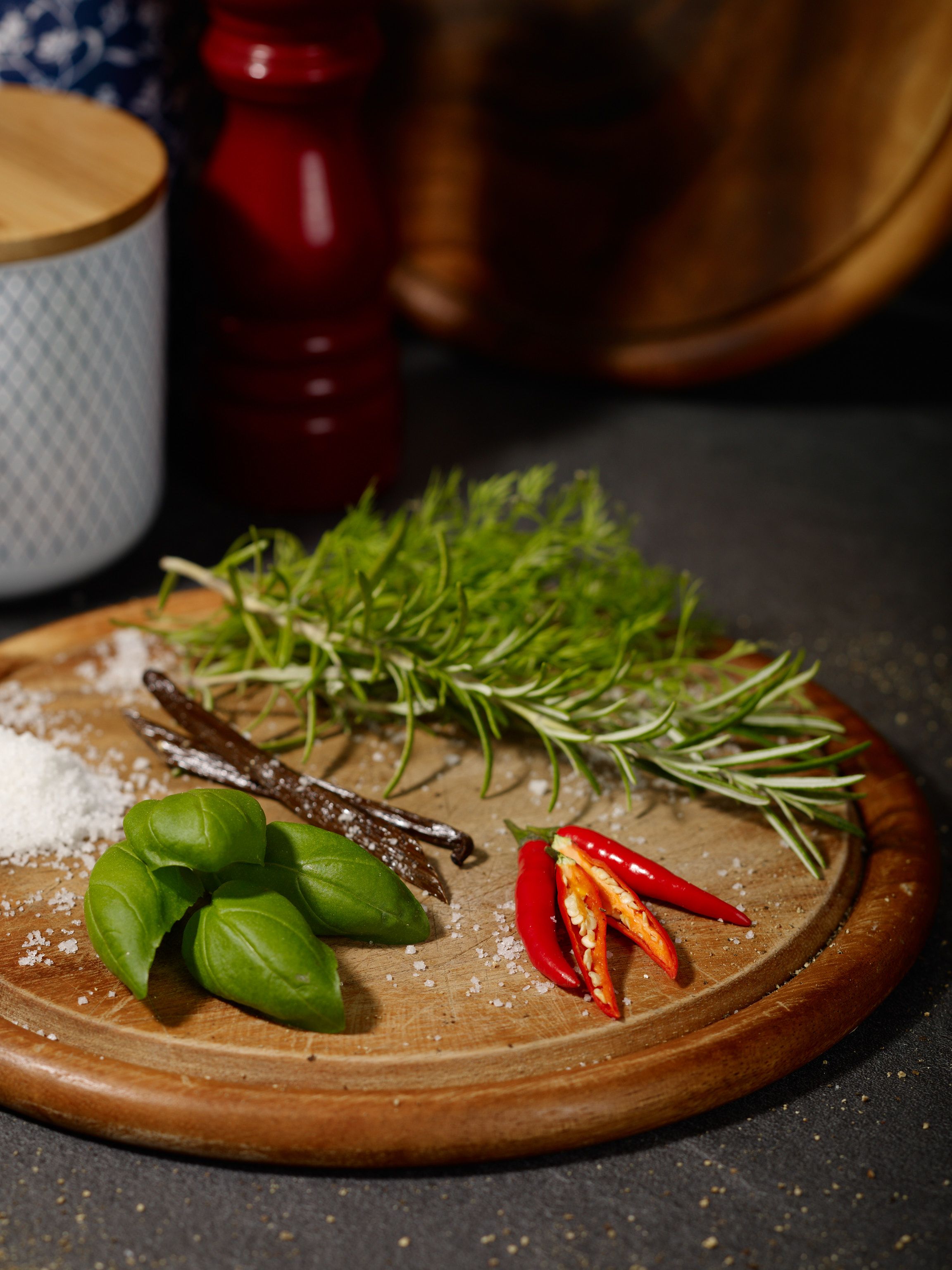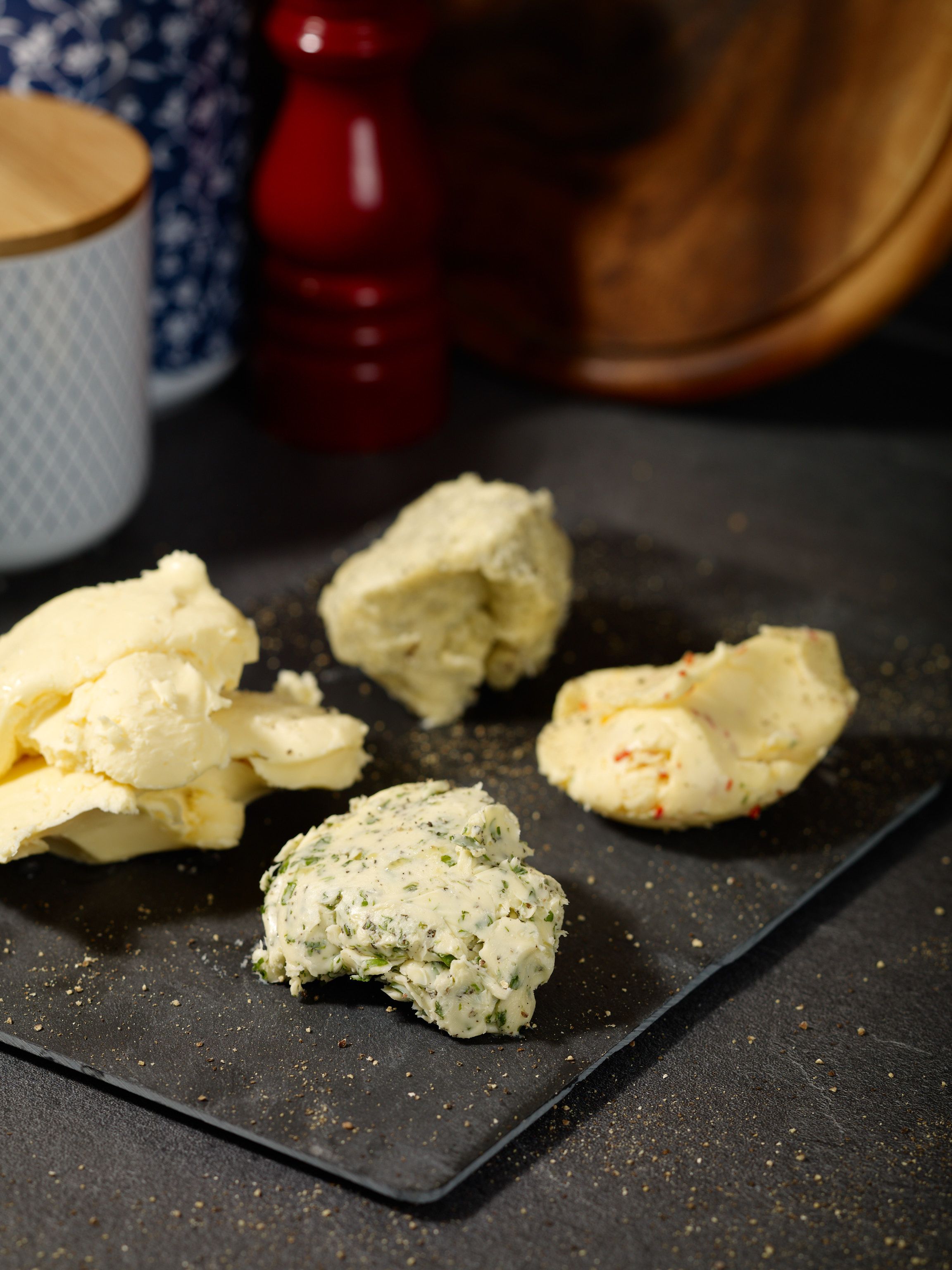
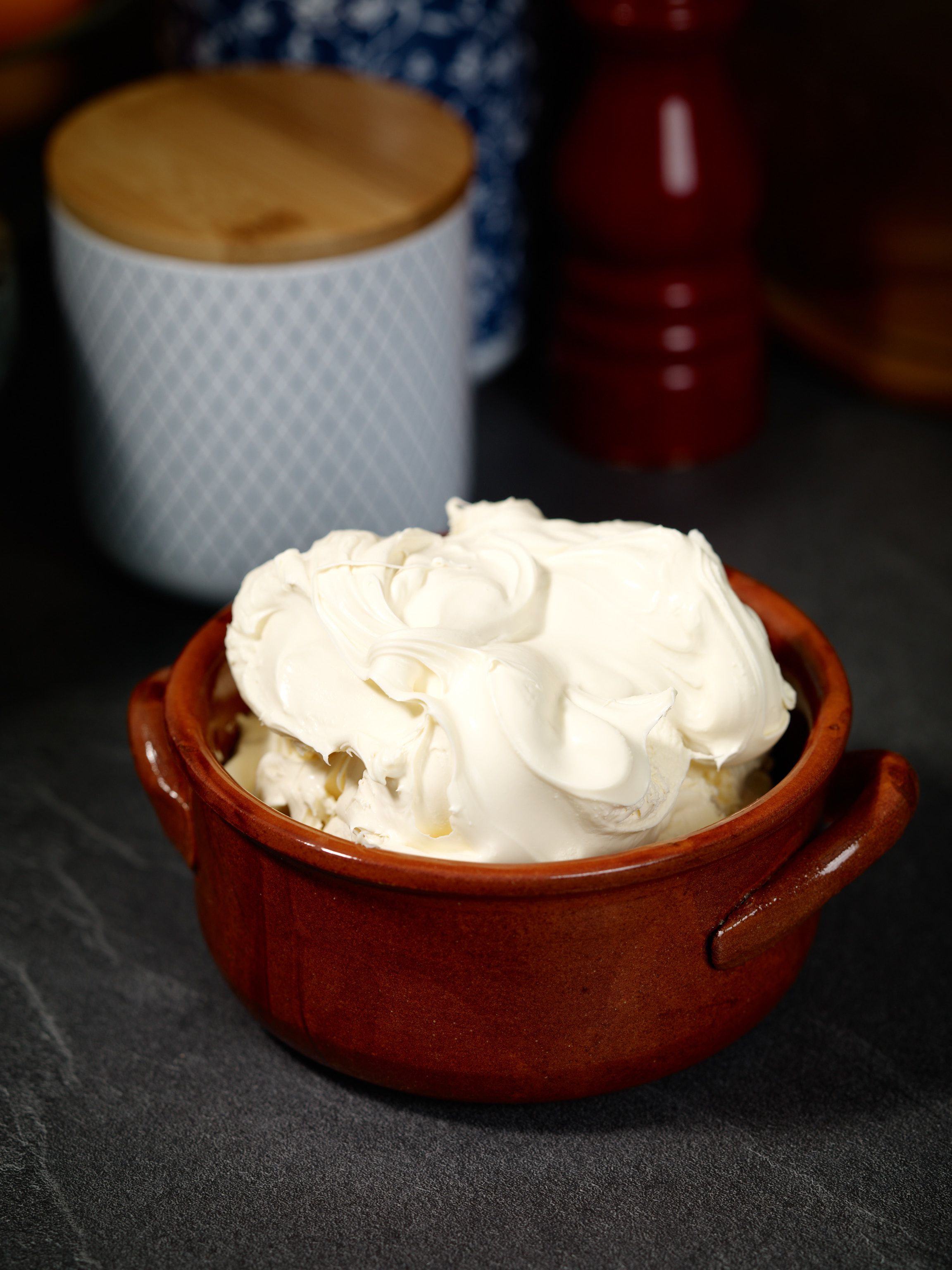
Butter can be made from milk or - as it is the case here - from heavy cream. If this raw product is pasteurised, the resulting product will have a longer shelf life but it will also lack the distinctive flavour of cultured butter. This flavour is the result of continued fermentation by the bacteria that are naturally present in raw milk.



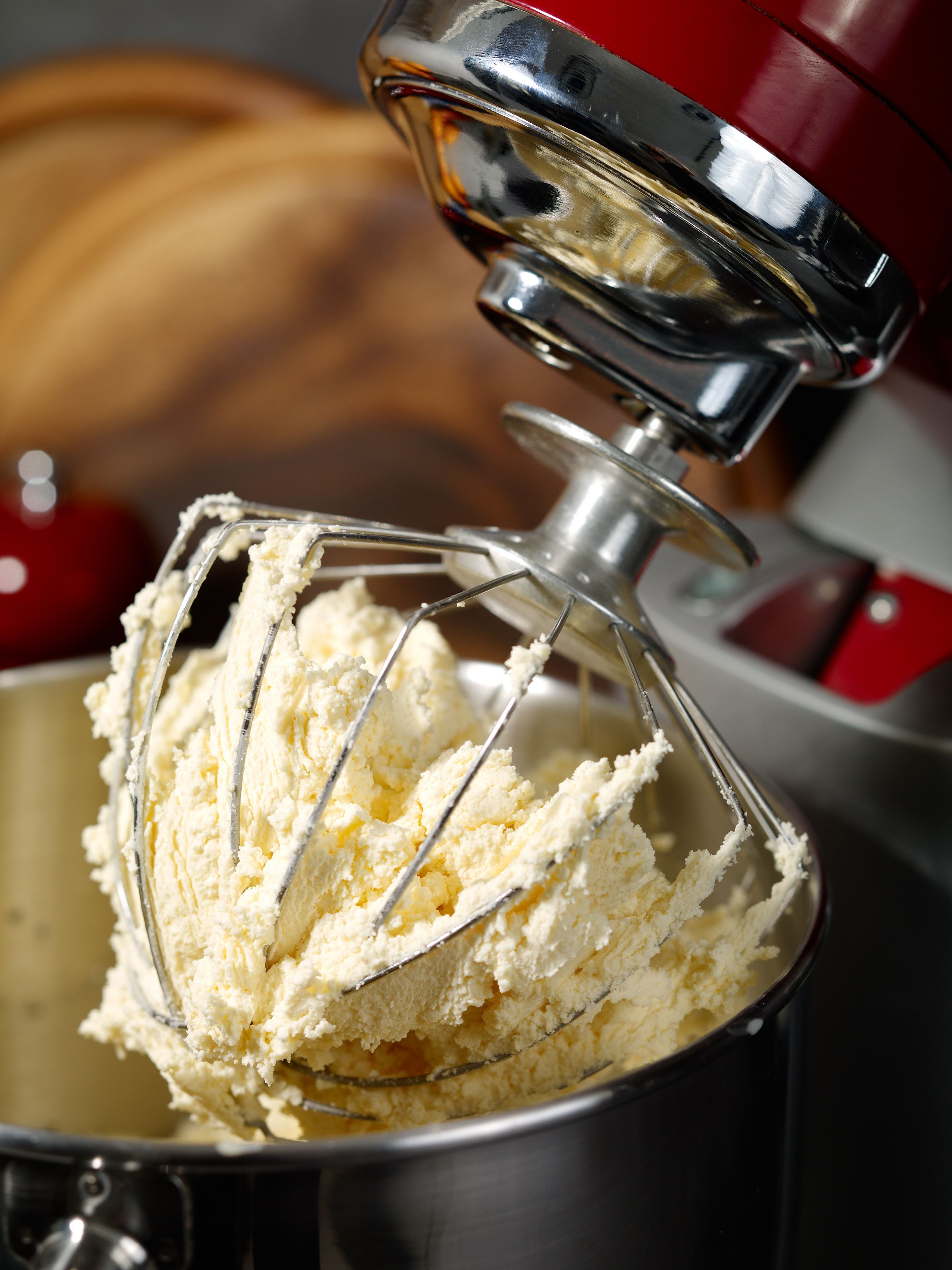

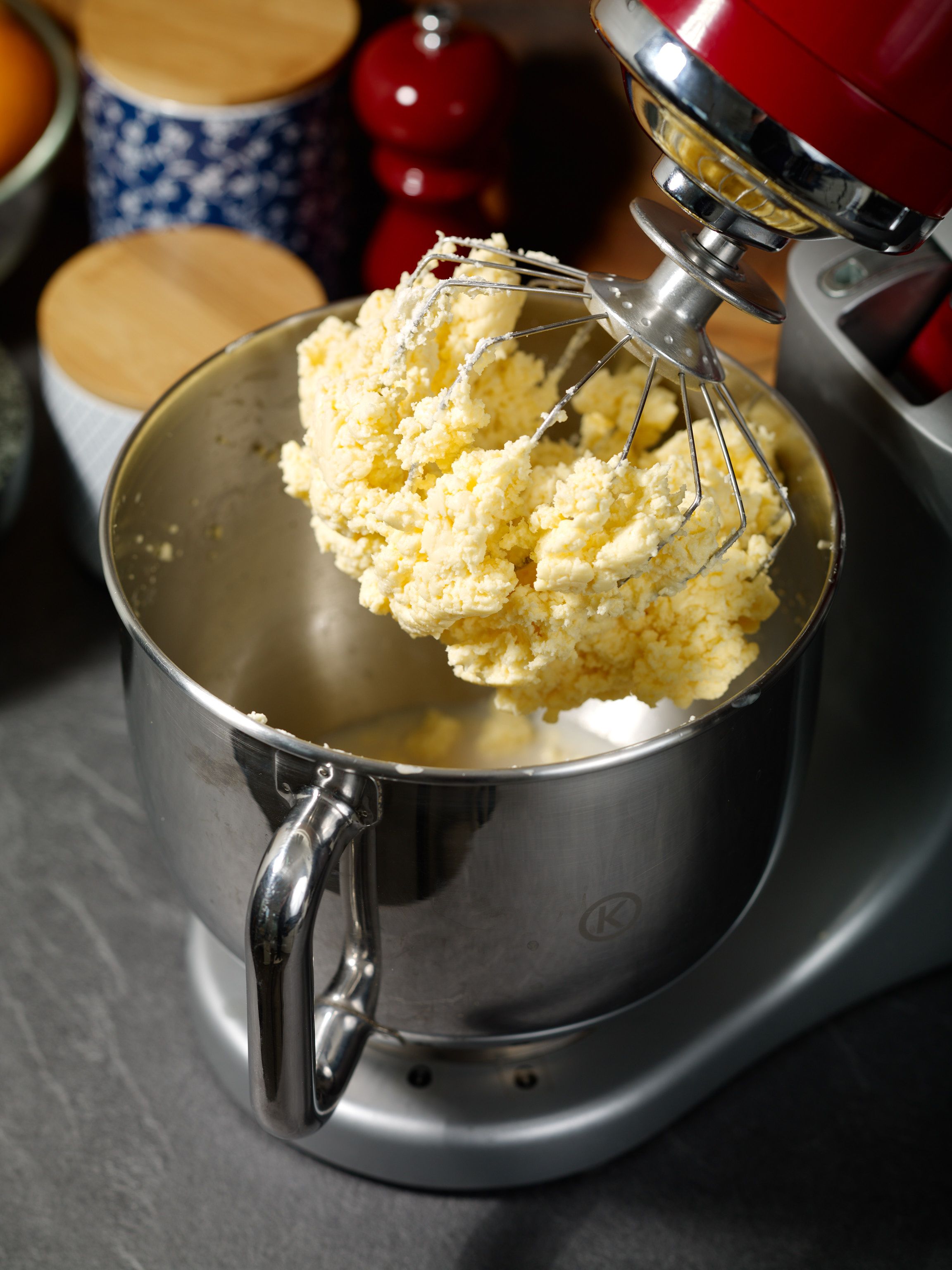






Through agitation the membranes of emulsifier wrapping the globules of milk fat are destroyed and the cream is separated into butter and buttermilk.




First, the grains of fat are worked into a consistent mass by kneading them together. This raw butter still contains pockets of buttermilk which is removed by washing the butter with ice water.

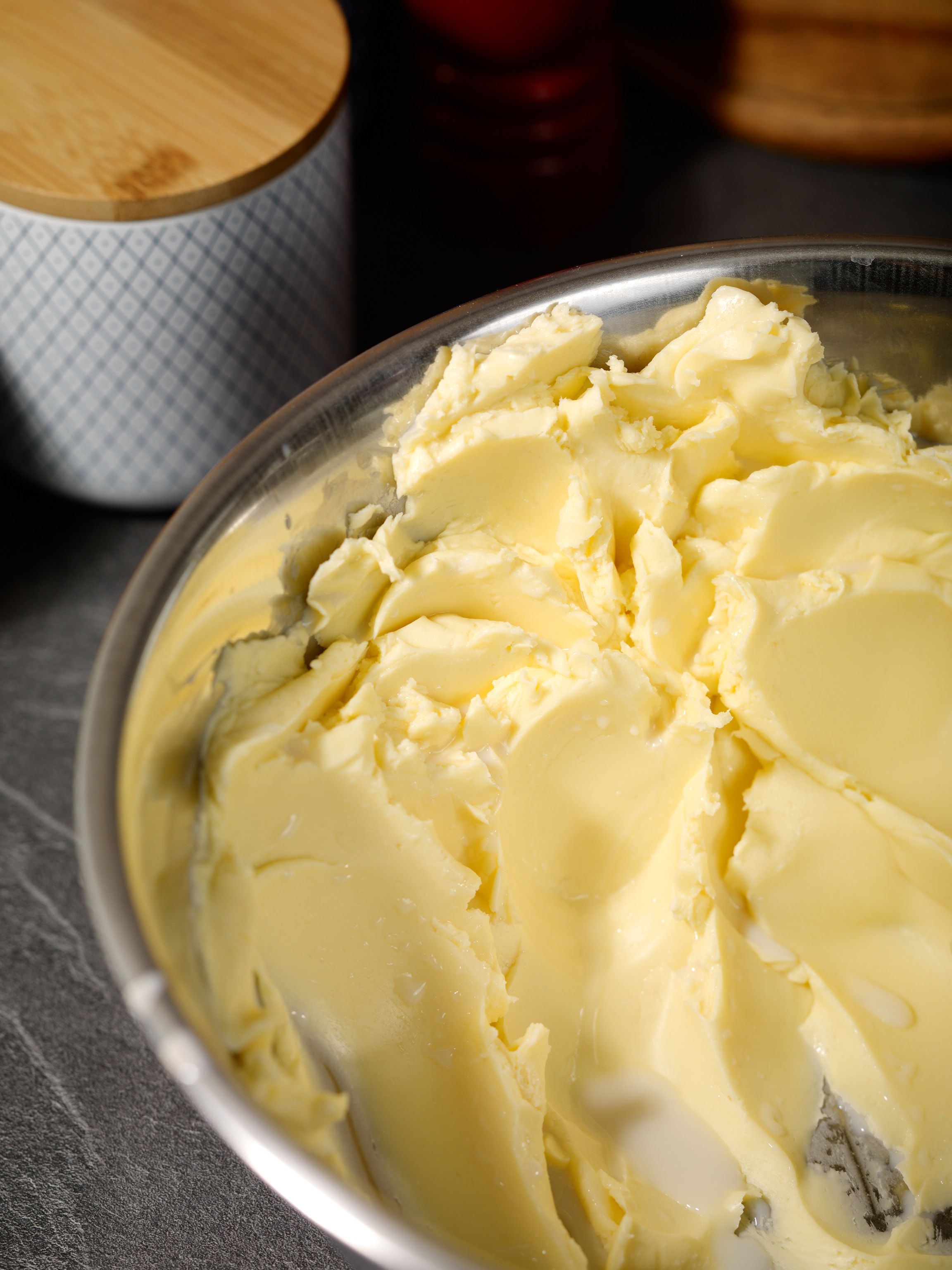

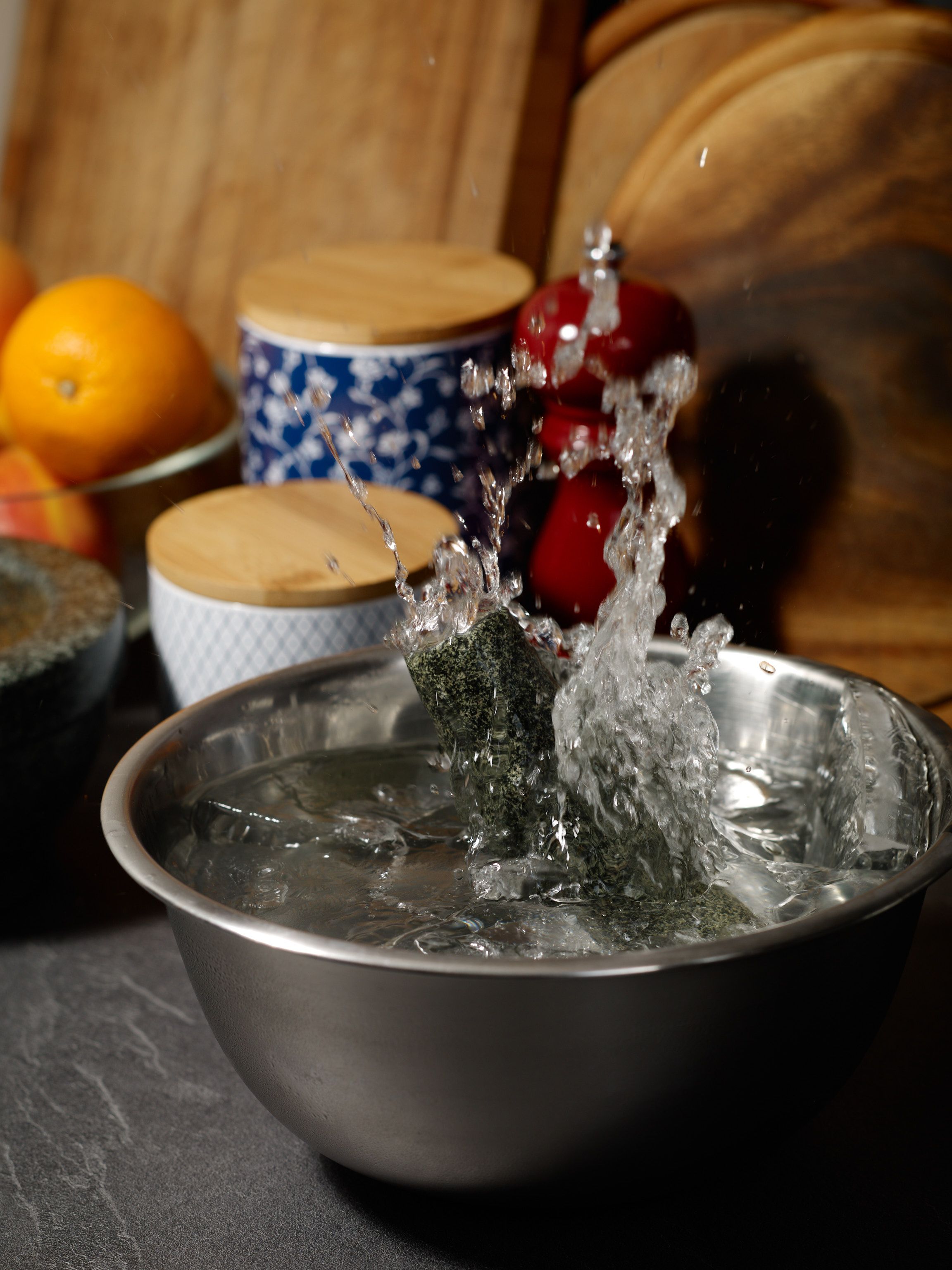








While fresh butter on a slice of sourdough bread is a treat on its own, it can also be creatively seasoned to complement its flavour.

